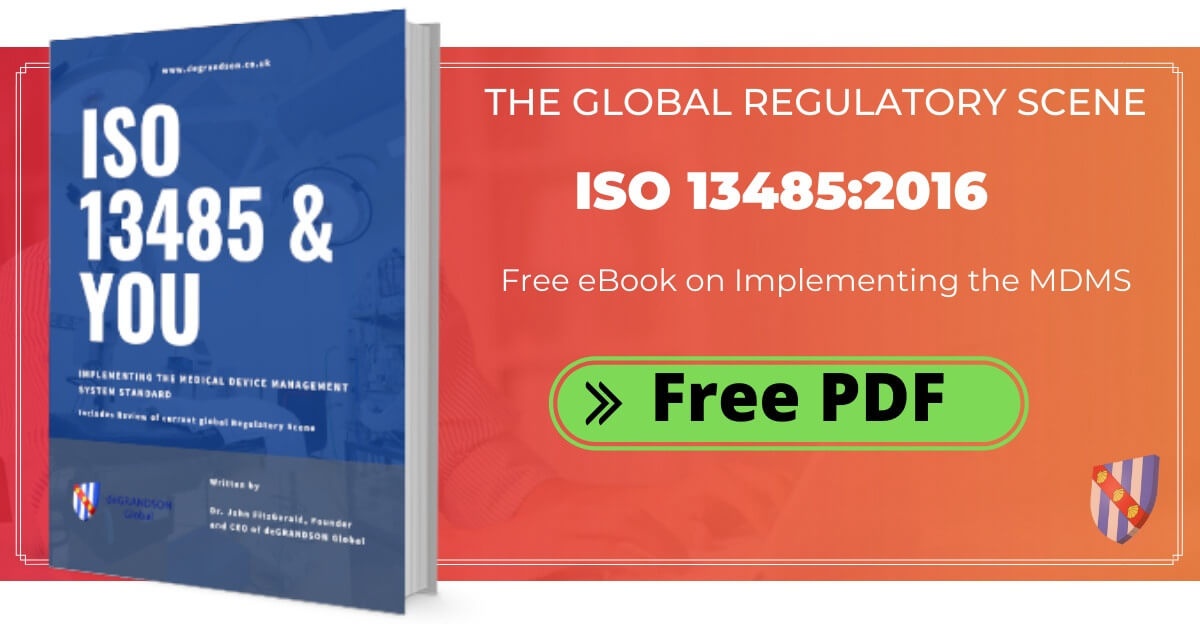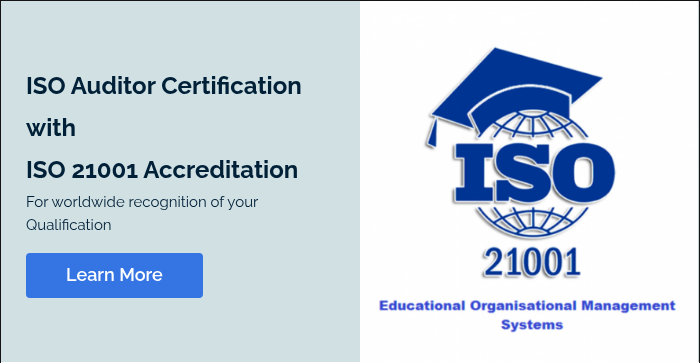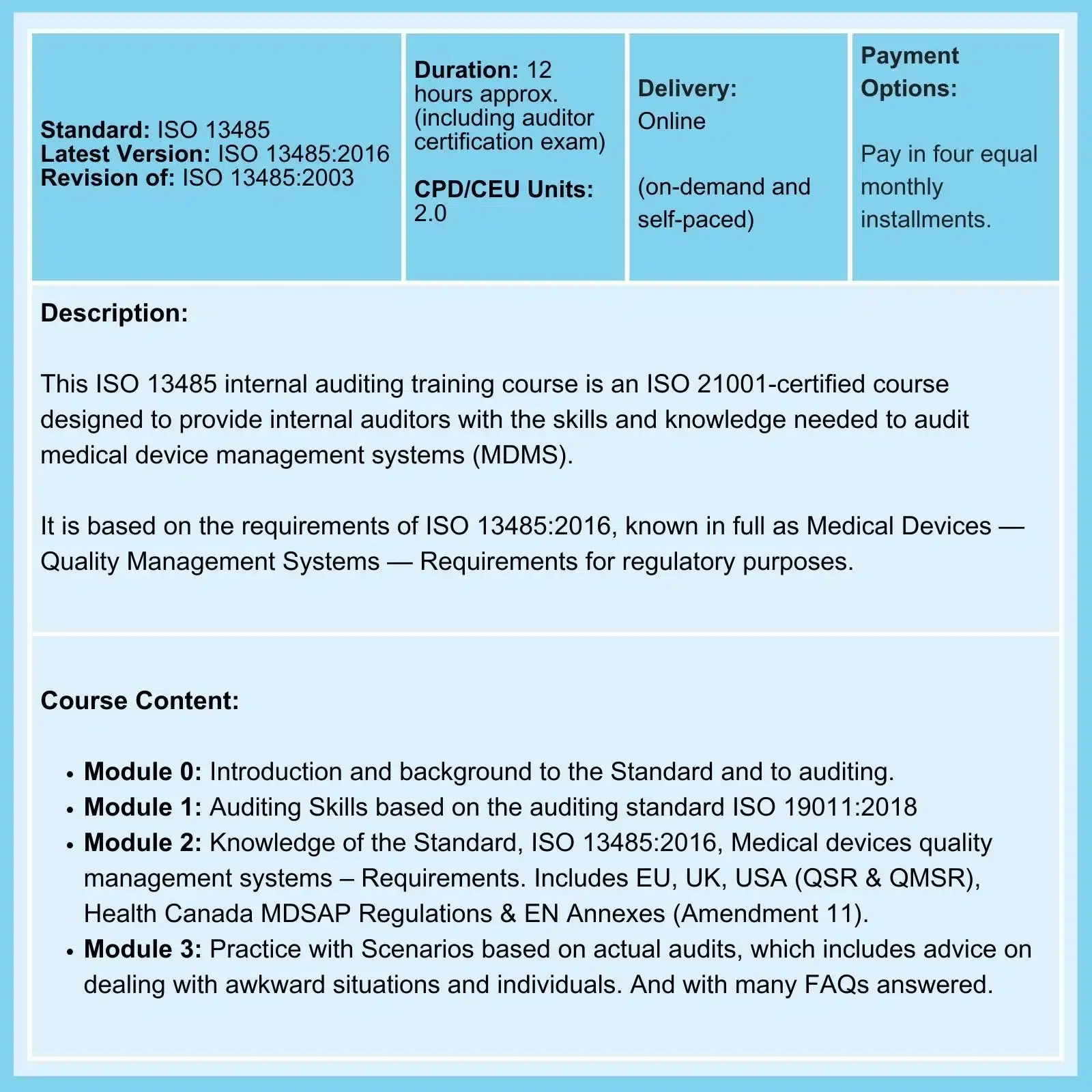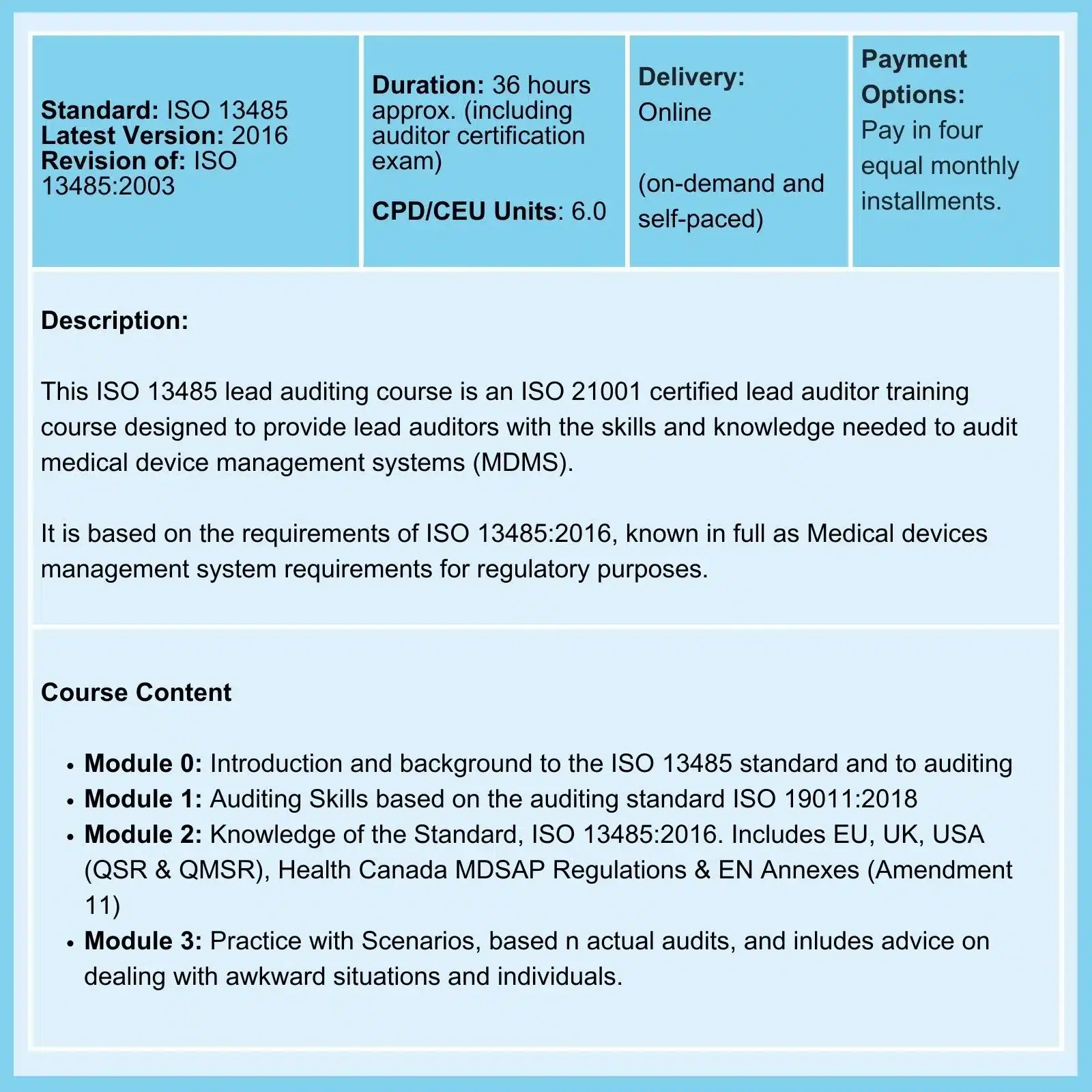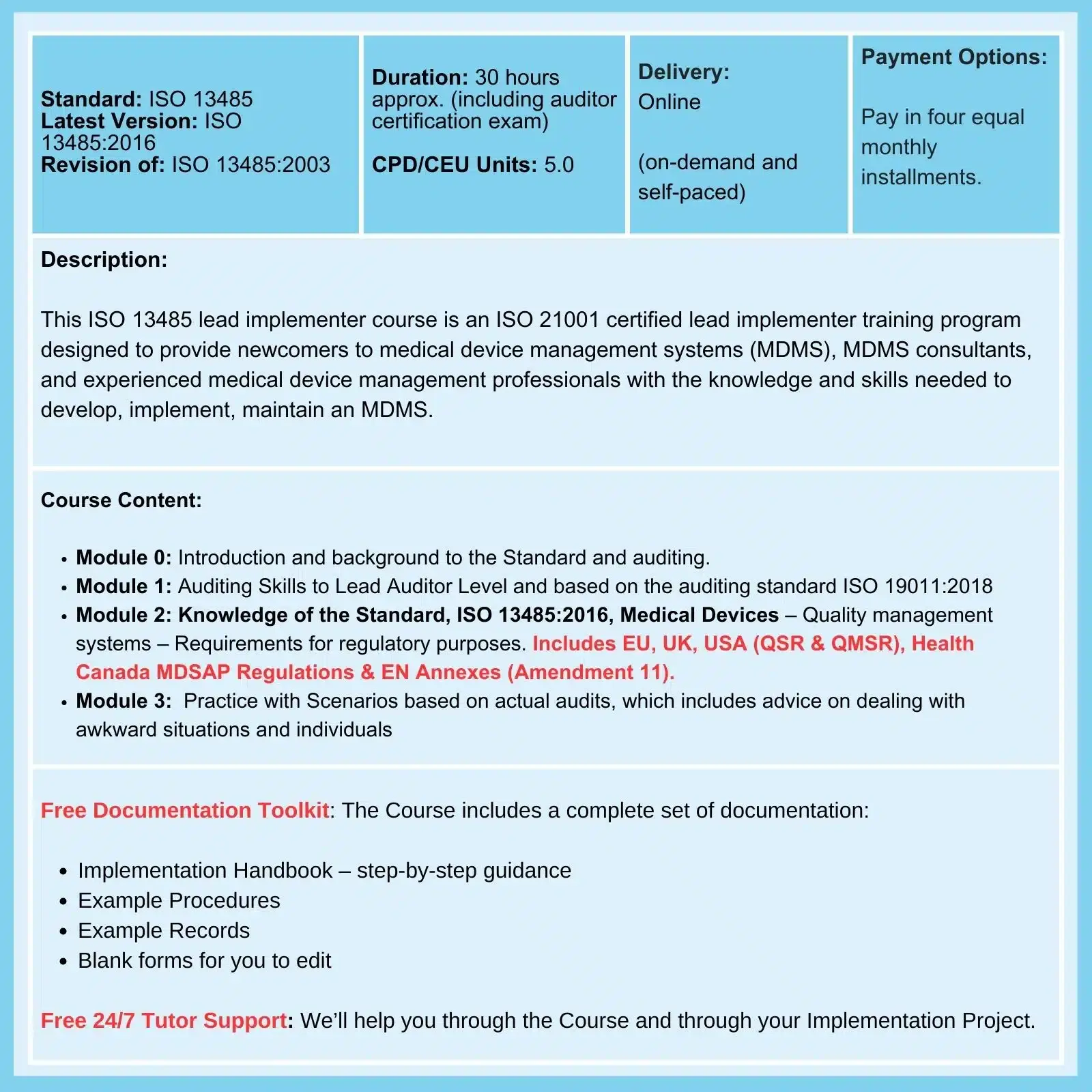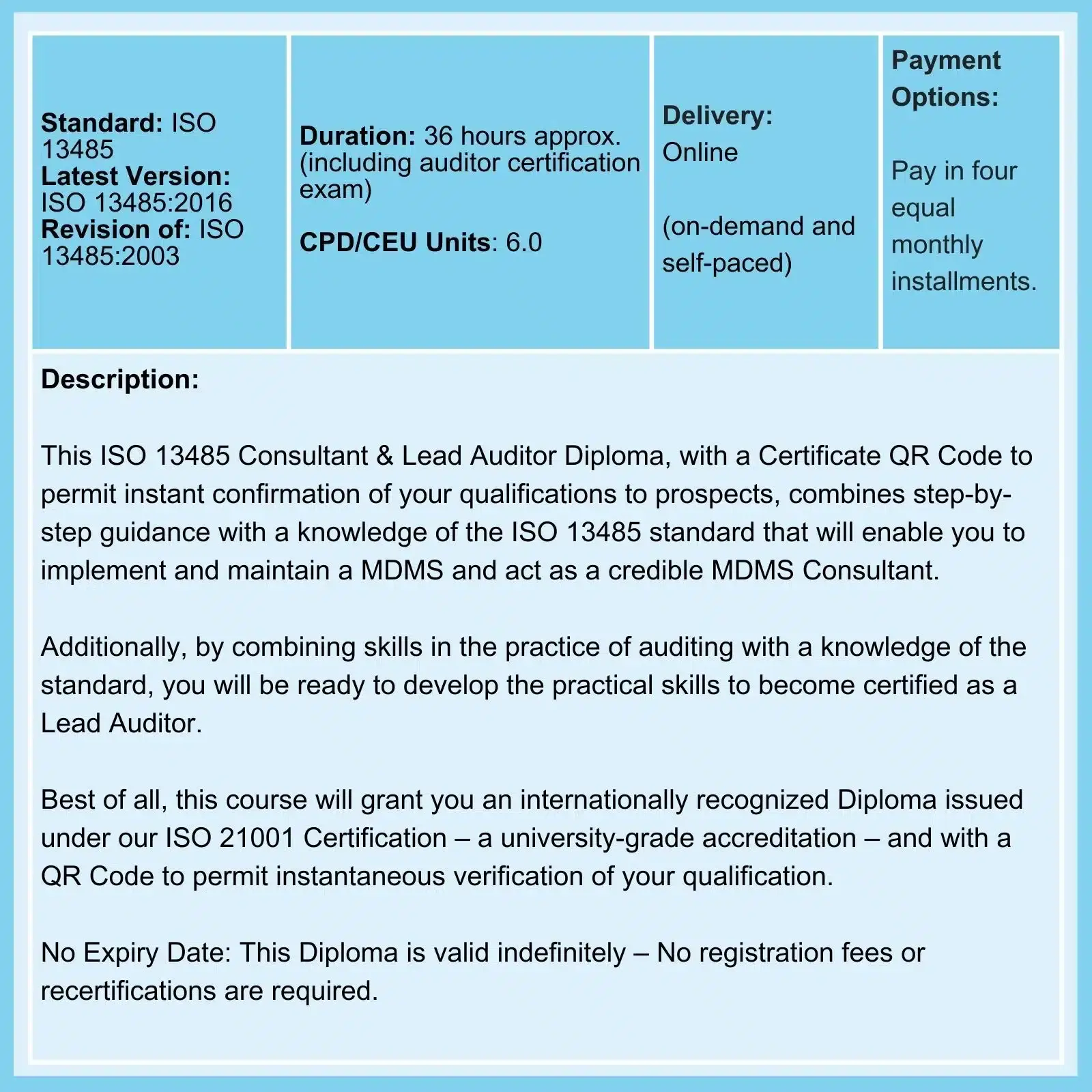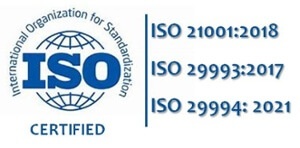Your old ISO 9001 QMS 'dolled up' with the language of the 2016 Standard is not going to be adequate.
When you are first audited against ISO 13485:2016, the Auditors, whether a Notified Body or Certification Body, will, as usual, be seeking objective evidence of your compliance with the Standard. Being an audit against ISO 13485, a different style of Quality Management System standard, the extent of the implementation and maintenance of new or changed requirements versus ISO 9001:2015 will be of particular interest. In fact, essential reading.
What's different about ISO 13485:2016?
There are seven key areas whose requirements you can expect them to concentrate on. These are...
1. Unfamiliar Definitions in ISO 13485:2016
Be sure to include a review of the definitions in Part 3 of the Standard in the development or migration of your Quality Management System (QMS). We draw your attention in particular to these:
- Advisory notice - covers changes in the use, modification, return, or destruction of a medical device, and regulatory requirements also apply. If your organization holds the marketing authorization/license, don't ignore the requirements here.
- Clinical evaluation - the verification of clinical safety and performance is now included in expanded EU Regulations - check it out.
- Complaint - definition differs from ISO 9000.
- Labeling - as in Regulations, the definition includes instructions for use.
- Manufacturer - The definition includes seven explanatory Notes.
- Medical device - the definition here is different from that in EU or FDA Regulations, and you will need to reconcile your QMS against both.
- Post-market surveillance - because of the emphasis Regulators place on feedback from the market, especially after the launch of new products, expect external auditors also to emphasize requirements here.
If these terms are new to you, you need ISO 13485 training.
2. Expanded Requirements for Risk Management in ISO 13485:2016
By now, we are familiar with risk-based thinking as required by ISO 9001. But risk gets a different treatment in ISO 13485. While ISO 9001 is concerned with business risk and consequential effects on customer satisfaction,
ISO 13485 focuses on the medical device itself and the risks in use and misuse to patients' and end-users' safety. A fully-featured risk management process is needed where risks are analyzed and evaluated; where a reduction in risk is needed, a risk treatment plan is developed, which must also be implemented and reviewed.
Providers of goods and services to the medical device sector (e.g., component manufacturers and logistics companies) are not excused from requirements here and, for lack of support and information from the medical device manufacturers, may struggle with this one.
3. Resource Management with Special Attention to People
The provision of adequate resources, particularly human resources, requires special attention. The work environment (e.g., cleanroom) and contamination control (e.g., staff attire, behavior, and habits) will be focused on. The use of temporary staff will get much attention. Staff will be interviewed about contamination control, for example.
4. Different set of Management Responsibilities in ISO 13485:2016
Quality Objectives and plans to achieve them will be examined. Responsibilities and authorities will be checked to ensure that all responsibilities for regulatory requirements have been assigned and that authorities - especially regarding the release of the product - are defined.
Internal communication will get renewed attention as it is key to ensuring that the good intentions documented in the MDMS get implemented and are maintained.
5. Focus on Documentation - Procedures and Records - where up to 139 instances may apply
There are now 139 (sic) instances in the 2016 Standard where documentation is mentioned. In developing your system, a careful check needs to be made to ensure that all applicable mentions of documentation are acted upon.
These requirements provide regulators with tick-box items to check, and therefore, external auditors will not want to leave any unchecked instances behind for a subsequent regulatory inspection to uncover. This could be an area that provides many avoidable Minor Non-compliances. Be sure you are not caught out.
And if you are a manufacturer of a Class 1 device in Europe, expect your self-declaration of conformity to CE Mark Regulations also to be checked. The same applies to the UKCA Mark under UK Regulations.
6. Increased Design Controls, Environment Controls, and Manufacturing Controls for you and your Suppliers
There are generally more detailed requirements in these areas. Carefully reading the Standard, combined with a knowledge of your business, is necessary to get a good result here.
If you are using the services of a consultant to implement or upgrade your Medical Device Management System (MDMS), you are strongly advised to study the Standard yourself to make sure that no detailed requirement is missed. An ISO 13485:2016 Implementation Course would be a good way of gaining knowledge of both the Standard and its interpretation.
7. Ensure the additional Requirements from FDA QMSR are included in your QMS
On August 7th, 2024, the FDA published Quality Management System Regulation: Final Rule Amending the Quality System Regulation – Frequently Asked Questions. This document gives a definitive interpretation of the revised regulations.
From February 2026, the QMSR regulations apply to all medical devices regulated by the FDA. At first glance, these regulations occasionally reference ISO 13485, using the phrase 'incorporation by reference'. And every auditable part of ISO 13485 is incorporated by reference. Therefore, compliance with ISO 13485 is a requirement of QMSR.
Regarding ISO `13485 certification, this document states:
"FDA inspections under the QMSR will not follow the MDSAP audit plan or procedures. The FDA will not require certificates of conformance to ISO 13485, and will not issue certificates of conformance to ISO 13485. A certificate of conformance to ISO 13485 will not exempt a manufacturer from an FDA inspection. See responses to public comments 79, 80, and 81 in the final rule. FDA inspections assess compliance with FDA regulations and are scheduled based on risk factors."
So, while not a requirement, you can anticipate that with accredited certification to ISO 13485 and a 'clean' record with the FDA, the likelihood of having an inspection is much reduced.
It should be noted that compliance with applicable regulations (QMSR for the US market) is included in the scope of an ISO 13485 audit. In other words, you must demonstrate compliance with applicable regulations in order to obtain an accredited ISO 13485 certificate.
Regulators from around the globe participated in the Technical Committee that drew up the ISO 13485 revision in 2016. The greatly increased number of additional, specific requirements ensued. You may need to develop checklists for use in internal audits to help ensure that no applicable ones get missed in future audits.
And I hope it's quite clear that a re-badged ISO 9001 Quality Manual with the same old processes and procedures is just totally inadequate for the requirements here.
8. Ensure the additional Requirements from the EU Regulations are included in your QMS
Note that the Annexes to the EN (European Union Harmonised) edition of the 2016 Standard have been updated with the issue of Amendment 11 to the Standard. This Amendment, which identifies where ISO 13485 requirements are inadequate in meeting the 2017 MDD and IVDR regulations, now applies. So, compliance with the ISO 13485 Standard does not ensure compliance with EU Regulations. Be cautious when auditing your MDMS against the Amendment 11 Annexes.
You must ensure that all additional requirements from the EU Regulations are included in your MDMS. As such, they form part of your MDMS, and external Auditors will include regulatory compliance in the scope of their audit. You have now been forewarned!
9. ISO 13485 in the Medical Device Supply Chain
The Introduction to the ISO 13485 Standard allows for the certification of organizations involved in the Medical Device supply chain (component manufacturers, packaging design studios, cold chain distributors, etc.). As has happened in Europe, we can expect medical device manufacturers working to QMSR to put pressure on US suppliers to obtain certification. It is not uncommon for such manufacturers to have certification as a mandatory precondition when considering new suppliers.
Best of luck!
Related Courses
Related Articles
- ISO 13485 Certification: 26 FAQs answered
- ISO 13485:2016 vs. EN ISO 13485:2016: Which Should You Get?
- ISO 13485: Critical Subcontractors & Crucial Suppliers
- Essential Documentation for ISO 13485 Certification
- FDA QMSR and ISO 13485 – what you need to do
deGRANDSON Global is an ISO Certified Educational Organization
We have chosen ISO 21001 certification because, unlike IRCA and Exemplar badges (which in our opinion are commercially compromised), it is based on independent third-party assessment. It is a ‘university grade’ standard in use globally by schools, colleges, and universities to demonstrate their competence.
Written by Dr John FitzGerald
Related Articles…
On 02-Feb-26, the FDA Final Rule, amending the Current Good Manufacturing Practice (cGMP) requirement of the Quality System Regulation (QSR) of medical device manufacture, comes into force. The amendments incorporate by reference (and so align more closely with) the international standard ISO 13485:2016, Medical Devices - Quality ... Continue reading
Great opportunities for Suppliers to the Medical Device Sectors on both sides of the Atlantic. In February 2026, the FDA adopts ISO 13485 as part of the new QMSR regulations. You can anticipate that Medical Device manufacturers will be asking their suppliers to get ISO Certification. This is not a regulatory requirement but provides a ... Continue reading


